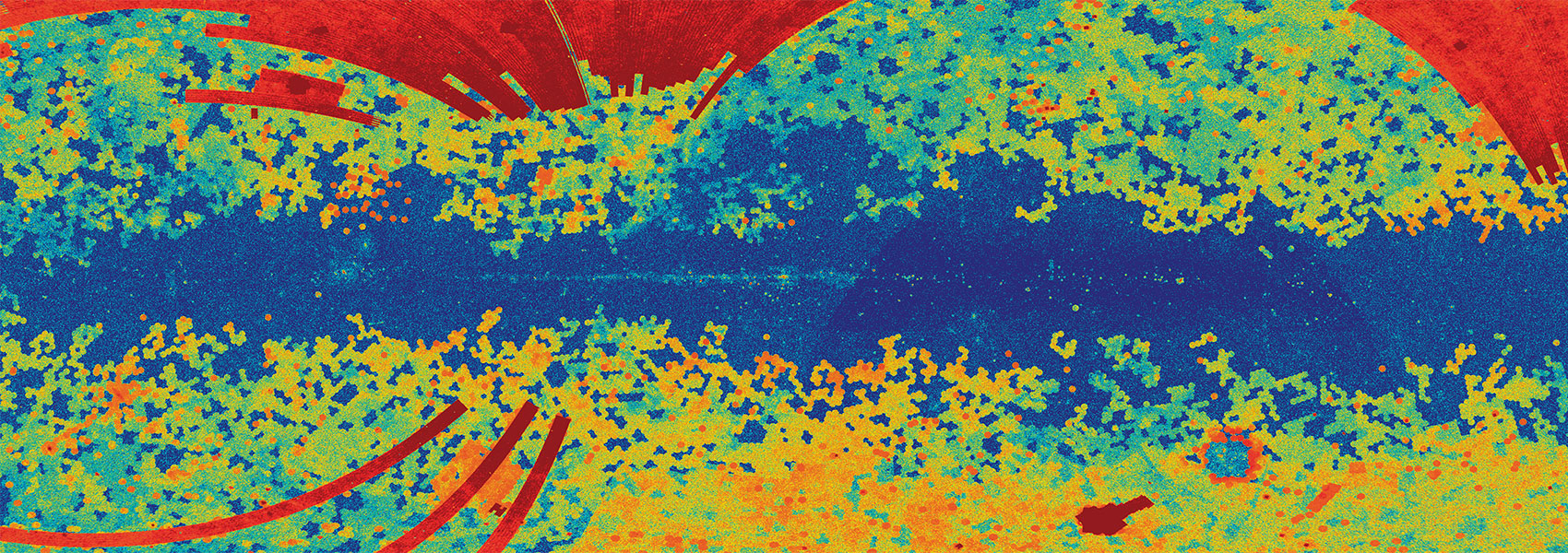The W. M. Keck Observatory and the KCWI team at Caltech are proud to announce the first official release of the Data Reduction Pipeline (DRP) for the Keck Cosmic Web Imager (KCWI).
Commissioned in 2017, KCWI is a high throughput integral field spectrograph covering the range from 3700 Angstrom to 5600 Angstrom (it will be extended to 1 micron with the installation of the red side, the Keck Cosmic Reionization Mapper, which will be available to the community in 2022) with resolutions from 900 to 18,000. The instrument was delivered with an excellent DRP written in IDL by Don Neill, Matt Matuszewki, and Chris Martin at Caltech, in collaboration with the KCWI development team.
The current release of the DRP is written in Python and uses the new DRP Framework (lead software architect: Shui Kwok) developed by Keck Observatory to provide a unified platform for data reduction that will be used by all future instruments. For more information about this Framework, please visit the online documentation at:
https://keckdrpframework.readthedocs.io/en/latest.
The installation and usage of the DRP is described in
https://kcwi-drp.readthedocs.io/en/latest. The DRP delivers science quality products and includes geometric, wavelength, and flux calibration. It can run completely unattended (including during the observing run at Keck Observatory) but it also offers a number of options to customize the reduction according to the specific science needs.

A portion of a KCWI data cube of a gravitationally lensed quasar pair. The data cube was produced by the new pipeline. The lower inset shows a spectrum drawn from an aperture placed over a portion of the cube encompassing one of the quasar images.
This is the first pipeline officially released as part of our Data Services Initiative (DSI, PI: John O’Meara), a large, multi-year project in collaboration between Keck Observatory, NASA, and NExScI to reimagine and innovate the data management model for Keck Observatory. This DRP was developed as a collaboration between the original developers of the IDL pipeline and Keck Observatory scientists and software engineers (Max Brodheim, Scientific Software Engineer; Luca Rizzi, Data Services Lead Scientist). As a result of this collaboration, the DRP is now officially supported and we welcome comments and request for assistance using the GitHub page:
Future steps with this pipeline under DSI include ingestion of the science products directly into the KOA.
In the near future, we will organize a series of workshops focused on using this pipeline to produce science data for common cases and for specialized observing strategies.
We encourage our KCWI community to download and test this pipeline. Our DRP team will do their best to address your questions and suggestions. We hope that you will find this DRP useful and that you will help us improve it; we are looking forward to more amazing science with KCWI.
Original text from the Keck Observatory.





